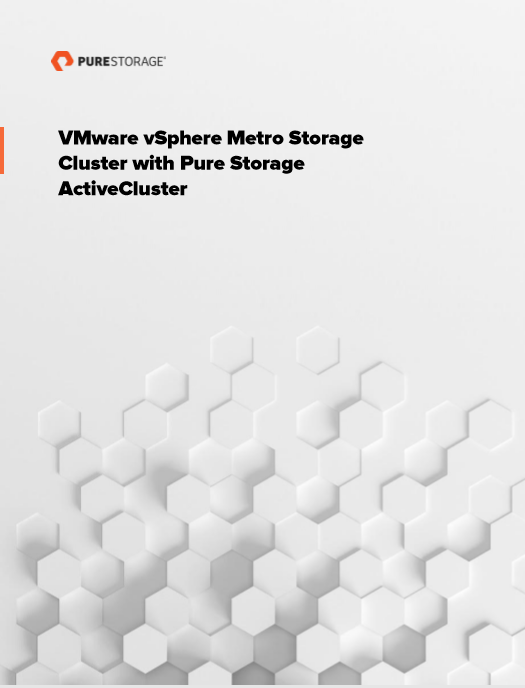Now that all of the prerequisites are complete, it is time to start creating protection groups and recovery plans.
This is part 3 of this series, the earlier parts were:

"Remember kids, the only difference between Science and screwing around is writing it down" -Alex Jason (made popular by Adam Savage)
Now that all of the prerequisites are complete, it is time to start creating protection groups and recovery plans.
This is part 3 of this series, the earlier parts were:
In my last post, I walked through configuring ActiveCluster and your VMware environment to prepare for use in Site Recovery Manager.
Site Recovery Manager and ActiveCluster Part I: Pre-SRM Configuration
In this post, I will walk through configuring Site Recovery Manager itself. There are a few pre-requisites at this point:
Continue reading “Site Recovery Manager and ActiveCluster Part II: Configuring SRM”
About four years ago, we (Pure Storage) released support for our asynchronous replication and Site Recovery Manager by releasing our storage replication adapter. In late 2017, we released our support for active-active synchronous replication called ActiveCluster.
Until SRM 6.1, SRM only supported active-passive replication, so a test failover or a failover would take a copy of the source VMFS (or RDM) on the target array and present it, rescan the ESXi environment, resignature the datastore(s) then register and power-on the VMs in accordance to the SRM recovery plan.
The downside to this of course is that the failover is disruptive–even if there was not actually a disaster that was the impetus for the failover. But this is the nature of active-passive replication.
In SRM 6.1, SRM introduced support for active-active replication. And because this type of replication is fundamentally different–SRM also changed how it behaved to take advantage of what active-active replication offers. Continue reading “Site Recovery Manager and ActiveCluster Part I: Pre-SRM Configuration”
An increasingly common use case for Active-Active replication in vSphere environments is vSphere Metro Storage Cluster (vMSC) which I wrote about in this paper recently:
This overviews how a stretched vSphere cluster interacts with the active-active replication we offer on the FlashArray called ActiveCluster. Continue reading “Tech Preview: vCenter Site Recovery Manager with ActiveCluster”
Quick post. I have published my ActiveCluster implementation guide for vSphere Metro Storage Cluster (vMSC). You can find it here:
https://support.purestorage.com/Solutions/VMware_Platform_Guide/User_Guides_for_VMware_Solutions/ActiveCluster_with_VMware_User_Guide
ActiveCluster, if you are unfamiliar, is the Pure Storage FlashArray implementation of fully Active/Active replication. Meaning a volume can exist and take write simultaneously from two arrays. No additional hardware or licenses required. Comes with Purity 5.0.0. A main focus, like everything else Pure, is simplicity–that goal has definitely been achieved in my view.
Continue reading “ActiveCluster and vMSC Implementation Guide”
Pure Storage recently offered up support for active/active replication for the FlashArray in a feature called ActiveCluster. And a common question that comes up for active/active solutions alongside VMware is how is VAAI supported?
The reason it is asked is that it is often tricky if not impossible to support in an active/active scenario. Because the storage platform first has to perform the operation on one array, but also on the other. So XCOPY, which offloads VM copying, is often not supported. Let’s take a look at VAAI with ActiveCluster, specifically these four features:
In Purity 5.0 Pure Storage released support for Active/Active replication on the FlashArray. This provides the ability to present the same storage volume simultaneously from two different FlashArrays.
For a good overview, check out this video:
Continue reading “Setting Up FlashArray Active/Active Replication (ActiveCluster)”